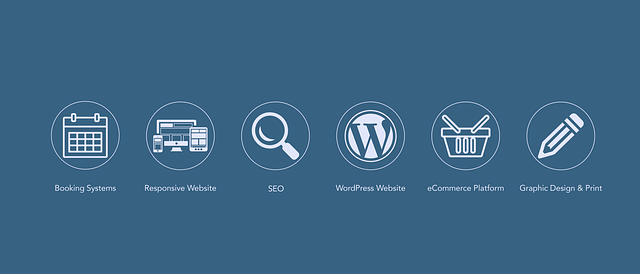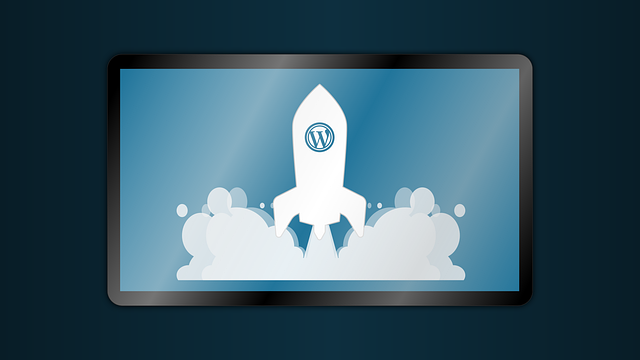Chatbots have transformed user experiences on WordPress sites by offering instant and efficient support via natural language processing. Integrated 24/7, these virtual assistants handle tasks from basic customer service to complex product guidance, learning and adapting over time through machine learning. Integrating a chatbot is simple, involving choosing a suitable plugin, customization, training the AI, testing, and defining clear conversation flows. Success is measured through performance metrics, user satisfaction, and advanced analytics, enabling continuous improvement and better customer support.
Implementing a WordPress chatbot can transform your website into a dynamic, supportive hub. This article explores the potential of these AI assistants for enhancing user experiences on WordPress sites. We begin by demystifying chatbots and highlighting their advantages in customer support. Then, we provide a comprehensive guide to integrating one seamlessly. Further sections delve into best practices for design and strategies for evaluating success through performance analysis. Discover how to harness the power of chatbot wordpress integration for improved engagement.
- Understanding Chatbots and Their Benefits for WordPress Websites
- Integrating a Chatbot on Your WordPress Site: A Step-by-Step Guide
- Best Practices for Designing an Effective WordPress Support Chatbot
- Measuring Success: Analyzing Performance and User Engagement with Chatbots
Understanding Chatbots and Their Benefits for WordPress Websites

Chatbots have emerged as a powerful tool for enhancing user experiences on websites, and WordPress is no exception. These intelligent virtual assistants are designed to interact with site visitors through natural language processing, offering instant support and answering common queries. By integrating a chatbot into your WordPress website, you can provide 24/7 assistance to your audience, reducing response times and increasing customer satisfaction.
One of the key benefits of chatbots for WordPress is their versatility. They can be tailored to fit various business needs, from handling basic customer service tasks to guiding users through complex product purchases. With advanced machine learning capabilities, these bots can learn and adapt over time, improving their accuracy and efficiency. This not only streamlines operations but also allows human support staff to focus on more intricate issues, ultimately improving overall customer care.
Integrating a Chatbot on Your WordPress Site: A Step-by-Step Guide

Integrating a chatbot on your WordPress site is a straightforward process that can significantly enhance user experience and customer support. Here’s a step-by-step guide to help you get started with adding a chatbot to your WordPress website:
1. Choose a Chatbot Plugin: The first step involves selecting the right chatbot plugin for WordPress from the extensive library available. Look for plugins specifically designed for customer support, as they often come with advanced features like AI-driven conversations and seamless integration with popular messaging platforms. Ensure the plugin is compatible with your WordPress theme and version to avoid any technical glitches.
2. Install and Configure: Once you’ve chosen a suitable chatbot plugin, install it on your WordPress dashboard. After installation, most plugins offer an intuitive setup wizard that guides you through configuring basic settings like welcome messages, response triggers, and user roles. Tailor these options to match your brand voice and customer support style.
3. Customize Chatbot Appearance: Next, personalize the look and feel of your chatbot to align with your website’s design. Most WordPress chatbot plugins offer customization options for chat windows, including colors, fonts, and positioning on the page. This step ensures that your chatbot blends seamlessly into your site’s aesthetic.
4. Train Your Chatbot: Many AI-powered chatbots rely on machine learning to improve their responses over time. Train your chatbot by providing a range of sample customer queries and relevant responses. The more data you feed, the smarter and more effective your chatbot becomes in handling user inquiries.
5. Test and Optimize: Before making your chatbot live, thoroughly test its functionality and accuracy. Engage with the chatbot as a user would, asking various questions or seeking different types of support. Pay attention to response times and the quality of answers provided. Fine-tune settings and train the chatbot again if needed to ensure optimal performance.
Best Practices for Designing an Effective WordPress Support Chatbot

When designing a WordPress support chatbot, clarity and user-friendliness should be top priorities. Begin by defining the chatbot’s scope – what types of queries does it aim to handle? Crafting concise and simple conversation flows is key; avoid complex branching that might confuse users. Use familiar language and keep responses direct, ensuring the chatbot feels more like a helpful assistant than a bureaucratic hurdle. Integrate multimedia elements where relevant, such as images or videos, to enhance understanding and engagement.
Additionally, prioritize data privacy and security. Ensure compliance with regulations like GDPR by transparently explaining data usage and storage. Implement robust authentication mechanisms and consider role-based access control for sensitive areas. Regularly update the chatbot’s knowledge base to reflect website changes, ensuring accurate information exchange. User feedback loops are also essential; gather insights to refine responses and improve overall performance, making your WordPress support chatbot more effective over time.
Measuring Success: Analyzing Performance and User Engagement with Chatbots

Measuring success is a vital aspect of integrating a WordPress chatbot for support. It involves analyzing both performance and user engagement to ensure the chatbot delivers on its promises. Key metrics include response time, accuracy rates, and user satisfaction scores. By tracking these indicators, business owners can identify areas where improvements are needed, whether it’s refining the chatbot’s algorithms or enhancing its conversational flow.
Effective analysis requires implementing analytics tools that provide insights into chatbot interactions. These tools allow for a deeper understanding of user behavior, such as common queries, drop-off points in conversations, and conversion rates. Such data is invaluable for optimizing the WordPress chatbot, ensuring it becomes a powerful tool for enhancing customer support and driving business growth over time.
Integrating a WordPress chatbot can significantly enhance user experience and support on your website. By understanding the benefits, following a comprehensive guide for setup, adopting best practices in design, and measuring performance through analytics, you can leverage chatbot technology to provide efficient, 24/7 assistance to visitors. A well-optimized WordPress chatbot is not just a tool—it becomes an essential part of your support ecosystem, fostering engagement and driving positive outcomes.
